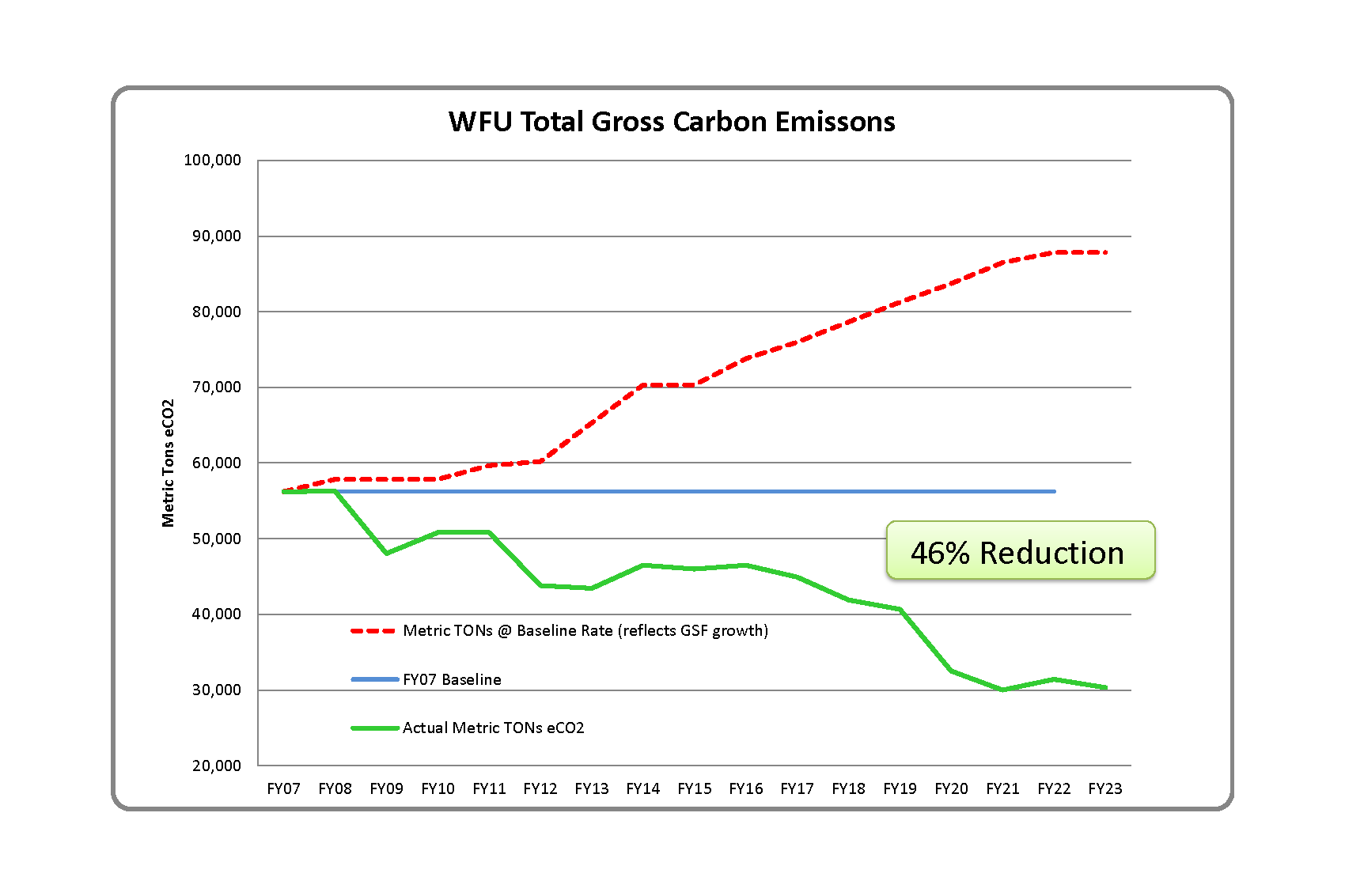Perspectives on Sustainability, Quarterly Newsletter
As we publish, world leaders and climate reporters are gathered in Dubai for the 28th United Nations Climate Conference, COP28. On the docket this year is the call for member countries to triple renewable energy capacity and double energy savings by 2030. The deal led by the United States, the EU, and the UAE, garnered support from over 60 countries earlier this month.
Why the urgency? With rapid action to slash greenhouse gas emissions (GHGs) today we can still limit future warming and its associated risks. The rise of renewables – and decreased use of coal, oil, and natural gas – are key to getting us there.
A Continuing Downward Trend in WFU Energy Use.
Wake Forest’s Facilities & Campus Services Utilities Operations team continually monitors and manages Wake Forest’s emissions, prioritizing opportunities for building renewal and energy efficiency to draw down our own GHG footprint. This is Phase I of our comprehensive climate action plan. In FY23, Wake Forest achieved a 46% reduction in total GHGs from its 2007 baseline. This considerable reduction carries forward an impressive downward trend that accelerated in FY20 when many classroom buildings were largely closed due to the COVID-19 pandemic.

But for all institutions like WFU who have made significant efficiency gains, there are finite remaining opportunities to decrease the GHG footprint through investments in energy efficiency and building renewal alone.
Enter the renewable energy transition.
For the first time, this year’s World Energy Outlook states that fossil fuel use is declining. The International Energy Association (IEA) predicts that demand for oil, natural gas, and coal will peak by 2030. By contrast, 80% of new power generation capacity will be from renewable energy sources by the same time, the IEA says. And solar will account for more than half of this expansion.
Taking Advantage of the Inflation Reduction Act.
It’s no secret that renewables are the fastest growing energy sources in the United States, increasing 42% from 2010 to 2020 and up 90% from 2000 to 2020. This growth in recent years is thanks in part to the Inflation Reduction Act (IRA). The IRA is the largest investment in clean energy and climate mitigation in U.S. history. It contains tax credits to spur the transition to a clean energy economy. Through the IRA, home investors in renewable energy may qualify for the Residential Clean Energy Tax Credit. Commercial renewable energy project developers also benefit from IRA credits.
Reaching Net Zero in Higher Education.
In higher education, just as in the private sector, renewable energy plays an important role in reaching net zero emissions. Over half of Wake Forest’s GHG emissions in FY23 resulted from the electricity used to power our campus (Scope 2 emissions). Investments in renewable energy equivalent to our annual electrical demand could offset 100% of the University’s Scope 2 emissions. Such a deal could put Wake Forest at least 75% of the way toward climate neutrality, according to conservative estimates.
